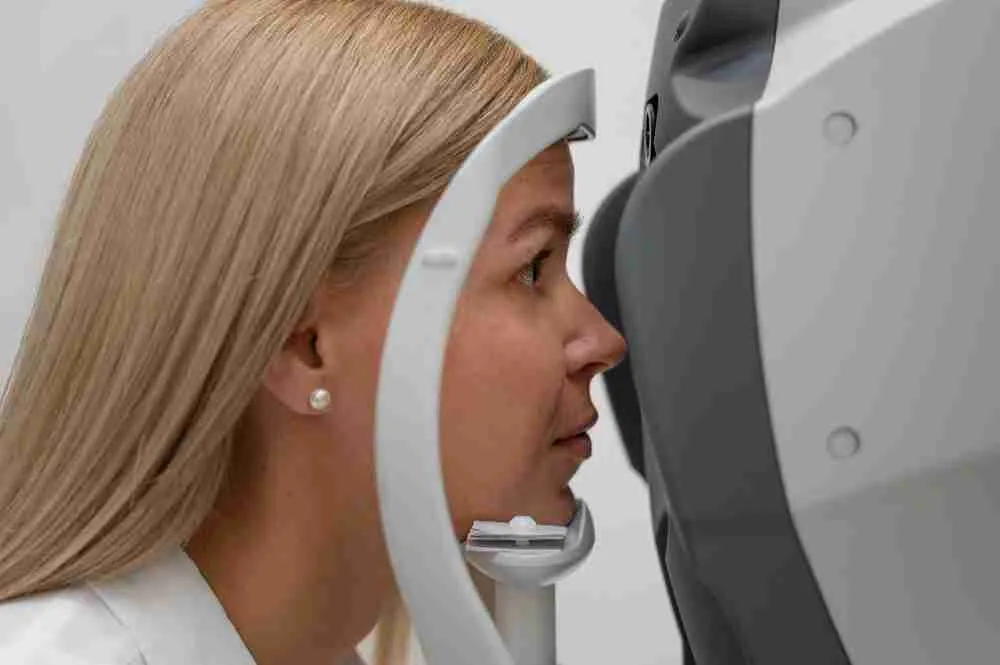What are progressive lenses?
 Progressive lenses are sometimes called no-line bifocals. An eyeglass lens allows you to see clearly at all distances. They work the same way as multifocal lenses. It has multiple prescriptions built into them, but progressive lenses are more subtle and gradual. This makes them a better choice for people who want the convenience of multifocal lenses. And do not want the stark lines and obvious divisions that come with them.
There are three types of progressive lenses:
Progressive lenses are sometimes called no-line bifocals. An eyeglass lens allows you to see clearly at all distances. They work the same way as multifocal lenses. It has multiple prescriptions built into them, but progressive lenses are more subtle and gradual. This makes them a better choice for people who want the convenience of multifocal lenses. And do not want the stark lines and obvious divisions that come with them.
There are three types of progressive lenses:
- Standard - Standard progressive lenses are the most basic type and are suited for everyday use.
- high-definition - High-definition progressives are designed for people who watch many television or movies or work in a visual-intensive profession.
- Computer progressives -These lenses are specifically optimized for use while viewing screens, such as laptops, tablets, and smartphones
Let's understand the details of the types of lenses.
There are three types of progressive lenses: standard, digitally designed, and premium.- Standard progressive lenses are the most common type and are designed to work well with a wide range of face shapes and sizes.
- Digitally designed progressive lenses are created using computer software to create a more customized lens for your specific face shape. This typically results in a better visual experience, with less distortion and blurriness. However, they can be more expensive than standard progressives.
- The most expensive type of progressive lens is the premium lens. This type is made with the highest quality materials and is custom-designed for your specific needs. The benefit of a premium lens is that it offers the best visual experience possible. However, it's important to note that they may only be suitable for some, as they can be quite expensive.
Why choose progressive lenses over regular lenses?
You might have yet to hear of progressive lenses when looking for a new pair of glasses. But they're worth considering, especially if you want to ditch your reading glasses. Here's a little more information on what progressive lenses are and why they might be suitable for you: Progressive lenses are designed to provide a seamless transition from distance to near vision without the lines or segmentation of bifocal or trifocal lenses. This makes them a better solution for people who wear glasses for reading and seeing distances.They also offer a wide range of benefits, including:
- A sharper, more natural vision experience
- The ability to see distances and near objects clearly and comfortably
- Reduced eye strain and fatigue
- The ability to wear your glasses for long periods without discomfort
- A wide range of prescription options to choose from
How Much Do Progressive Lenses Cost?
The price of progressive lenses will depend on a few factors, such as the type of lenses you choose, the ads you select, and the frames you pick. You can expect to pay anywhere from $200 to $1,000 for a complete pair of glasses. Of course, there are always ways to save money on your purchase.- For example, some insurance plans will cover the cost of progressive lenses, and some vision plans will offer discounts on certain brands or types of lenses.
- Another way to save money is to buy your glasses online.
- Several reputable online retailers sell progressive lenses at a fraction of the cost of brick-and-mortar stores. Just do your research and read customer reviews before making a purchase.
4 tips to Choose the Right Progressive Lenses for You
Now that you know more about progressive lenses, it's time to choose the right pair. Here are things to keep in mind:- Budget: Progressive lenses can be more expensive than traditional lenses, so be sure to factor that into your budget.
- Type of Use: If you're looking for everyday use, there are more affordable options. But if you need lenses for activities like driving or sports, you'll want to invest in a higher-quality pair.
- Lifestyle: If you have an active lifestyle, you'll want lenses that can keep up. Look for options with anti-reflective and scratch-resistant coatings.
- Prescription: Consult our eye doctor to find the right prescription for your progressive lenses.
FAQs-
Also, Read Vuity Eye Drops - Uses, Benefits, Side Effects, and More.Conclusion
We have answered your question about what are progressive lenses. In the end, the best progressive lenses for you are the ones that suit your individual needs the best. If you have a high degree of astigmatism, you may need a different type of progressive lens. You'll need another lens type if you have a strong prescription. An excellent way to find out is to talk to your eye doctor. They'll be able to help you figure out what type of lens is best for you and your eyesight. They will tell you about the different types of progressive lenses and their benefits. If you are unsure about this, get a free consultation at Credihealth, and talk to an expert.Frequently Asked Questions
Do I need to wear reading glasses with progressive lenses?
No, you don't need to wear reading glasses with progressive lenses. Progressive lenses have multiple viewing areas so you can see clearly at all distances—near, far, and between.
Do progressive lenses come in different styles?
Yes, progressive lenses come in different styles depending on your needs and preferences. There are three main styles of progressive lenses: standard, specialized, and premium.
How much do progressive lenses cost?
Progressive lenses typically cost more than regular glasses or contacts, but the price varies depending on the brand and where you purchase them. You can expect to pay anywhere from $100 to $1,000 for a pair of progressive lenses.
Are there any benefits to wearing progressive lenses?
Yes, there are several benefits to wearing progressive lenses. Progressive lenses can help you see clearly at all distances and provide a wider field of vision than regular glasses or contacts.
How do I choose the right progressive lenses for me?
The best way to choose the right progressive lenses for you is to consult with an eye care professional who can help you determine which type of lens is best for your needs and budget.

Reviewed by







